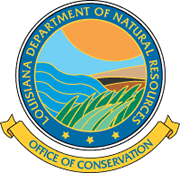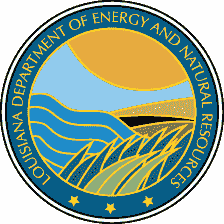History
THE FIRST OIL WELL IN LOUISIANA GALLERY OF COMMISSIONERS
The Louisiana Commission for the Conservation of Natural Resources was created in 1908. The Commission's purpose was to address general problems of Conservation in the state. Act 127 of 1912 reorganized the Conservation Commission (renamed in 1910), giving it authority to make regulations to protect state resources. Some of the regulations established as a result of Act 127 were: to require drilling permits be filed with maps of well locations, to require the use of surface casing and cement, and to require that abandoned wells be plugged.
The Louisiana Department of Conservation was created in 1916 and came under the control of a single officer entitled the Commissioner of Conservation. Act 133 of 1924 made it illegal to pollute the natural waterways of the state with salt water, oil, and other substances. This was the first recorded incidence of environmental action taken on the oil industry by the legislature.
Act 157 of 1940 was promulgated for the purpose of developing a sound program of conservation in the state and was subsequently adopted as Title 30 of the Revised Statutes of 1950. Statewide Order No. 29-B was first promulgated in 1943. Saltwater disposal well regulations were added in 1961 and amended in 1982 to include federally mandated language under the Environmental Protection Agency (EPA) approved Underground Injection Control (UIC) Program. The first commercial facility regulations were promulgated in 1980. The first oilfield pit rules were added in 1986.
During the reorganization of Louisiana State Government in 1976, the Department of Energy and Natural Resources (DNR) was established. The Office of Conservation (OC, within DENR) retained much of its autonomous jurisdiction over the oil and gas industry, such as the drilling and production of oil and gas wells and disposal of the associated exploration and production waste.

- Oil & Gas
- Energy
- Mineral Resources
- Conservation
- Coastal Management
-
Oil Spill Coordinator's Office
- Oil Spill Coordinator's Office Home
- Oil Spill Response
- Natural Resource Damage Assessment (NRDA)
- The Louisiana Regional Restoration Planning Program (RRP Program)
- Louisiana Regional Restoration Planning Program (RRP Program) Administrative Record
- Education and Outreach
- Acts, Regulations, Guidelines, & Plans
- About DENR
- Offices
- Media Center
- Contact Us
- Information Portals
- Featured Services
